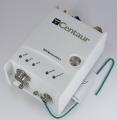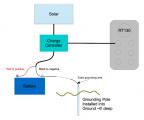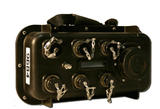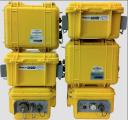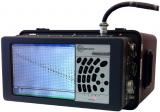 STRATAVISOR 64-CHANNEL SEISMOGRAPH
STRATAVISOR 64-CHANNEL SEISMOGRAPH.
Suitable for seismic reflection, refraction, downhole, crosshole, tomography, surface wave, or marine surveys, and seismic monitoring. System is housed in portable, ruggedized case with built-in, daylight-visible 800x600 color LCD and thermal graphics printer.
Operates under Windows XP multi-tasking OS and runs on Pentium-class processor.
High-speed over-sampling combined with digital signal processing provide a 24-bit result using Crystal Semiconductor sigma-delta A/D converters.

